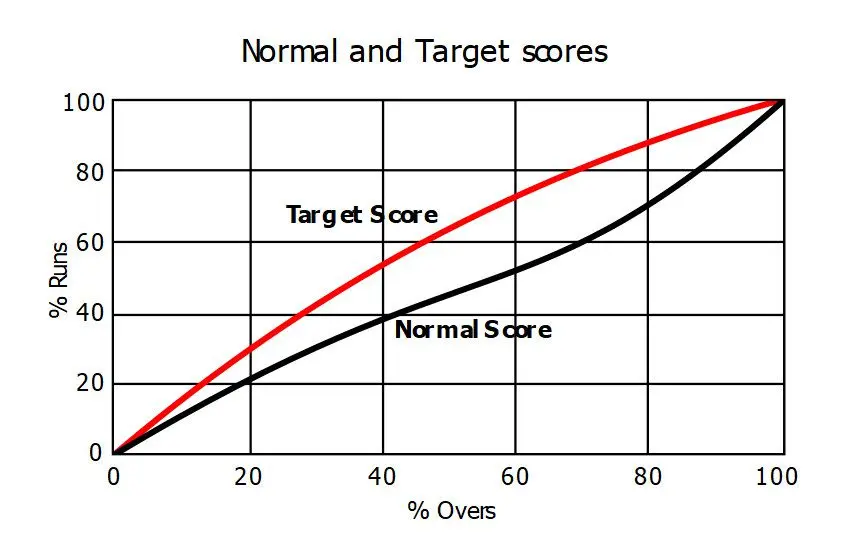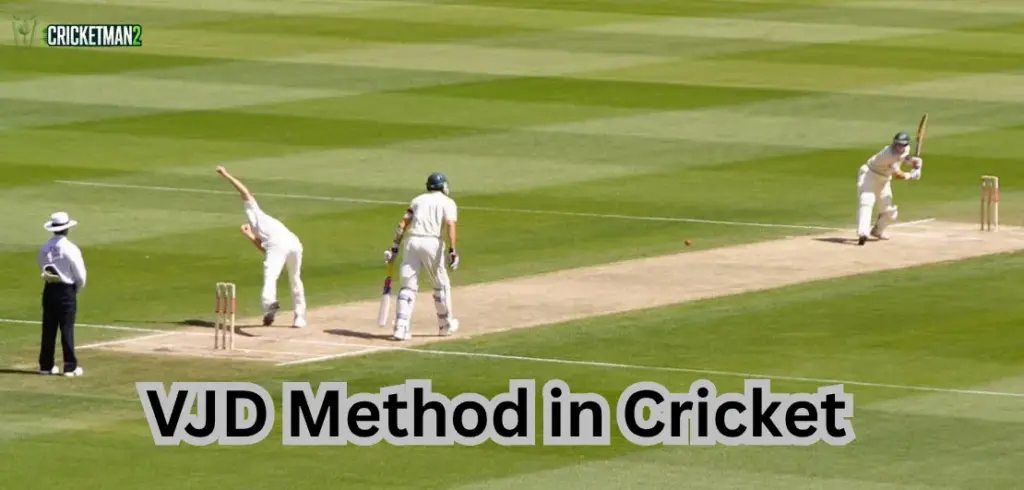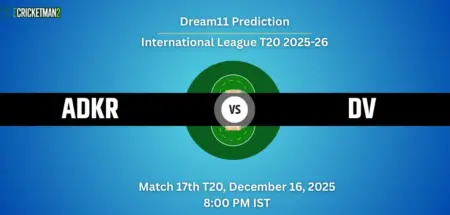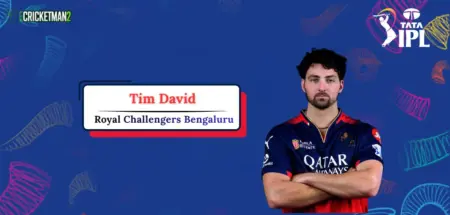In rain-affected cricket matches, determining a fair target for the batting team when overs are lost is tricky. While the DLS (Duckworth–Lewis–Stern) method is the international standard, Indian domestic cricket often uses an alternative: the VJD method (V. Jayadevan method).
Developed by Indian engineer V. Jayadevan, the VJD method is designed to reflect realistic scoring patterns in limited-overs cricket (ODI, T20). It is used by BCCI for domestic competitions to adjust targets when matches are interrupted by rain or other delays.
VJD Method Quick Overview:
| Category | Details |
|---|---|
| Full Name | V. Jayadevan Method |
| Developed By | V. Jayadevan (Kerala, India) |
| Introduced | 2007 (approved by BCCI) |
| Used In | Domestic ODIs & T20s in India |
| Purpose | To calculate fair targets in interrupted matches |
| Main Concept | Uses scoring patterns & two mathematical curves |
| Alternative To | DLS Method |
| Recognized By ICC | No |
| Recognized By BCCI | Yes |
See Also:- How to Calculate Follow on in Test Cricket
How VJD Method Works: Formula & Principles

1. Scoring Curves & Phases
The VJD method divides an innings into phases reflecting how teams pace their batting:
- Powerplay (early overs, fielding restrictions)
- Middle overs (steady scoring, fewer risks)
- Death/slog overs (final surge in runs)
Using these phases, VJD assigns weights to different overs and how productive they are, rather than assuming each subsequent over is always more productive (as some older methods do).
2. Two Curves: Normal & Target
- Normal Score Curve: Reflects expected progression of scoring over the entire innings without interruption, adjusted for the fall of wickets.
- Target Score Curve: Determines how many runs the chasing side must aim to score in remaining overs after interruption.
3. Interpolation Among Tables
VJD uses several preset tables corresponding to score ranges (e.g., 100-, 200, 300, etc.). If a first innings score is between two ranges (say 263, between 200 and 300), VJD interpolates between those tables to produce a custom curve. That approach ensures smooth transitions rather than abrupt jumps.
4. Wickets Factor
- The normal curve does account for wickets lost: if a team loses wickets, its scoring potential in later overs is adjusted downward.
- The target curve is less directly dependent on wickets; it focuses more on how many overs and runs remain in context of scoring patterns.
VJD Formula / Target Computation (Conceptual Steps)
While the exact mathematical formula is intricate, the broad steps to compute a revised target under VJD are:
- Determine the appropriate normal curve using Team 1’s final score and the closest score-range table.
- Use the target curve for the remaining overs and runs needed.
- Adjust for overs lost in the match interruption.
- Apply the wickets lost in the first innings to modify expected scoring trajectories.
- Interpolate if the first innings score lies between two base tables.
- Compute the revised target for Team 2 by combining the above curves.
You Can Read Also:- Super Over Rules in Cricket
Example Chart / Table (Illustrative)
Below is an illustrative (not official) resource-percentage style table for VJD (for teaching purpose):
| Overs Left | No Wicket Lost | Some Wickets Lost | More Wickets Lost |
|---|---|---|---|
| 50 | 100% | 90% | 70% |
| 40 | 88% | 80% | 60% |
| 30 | 72% | 65% | 50% |
| 20 | 55% | 48% | 35% |
| 10 | 35% | 30% | 25% |
This shows how a team’s resource potential decreases depending on overs and wickets.
Read more: VJD vs DLS Method in Cricket: Full Comparison,
Example of VJD Calculation
Let’s take a 50-over match scenario:
- Team 1 scores 250 runs in 50 overs.
- Rain interrupts Team 2’s innings, and only 30 overs can be played.
- Based on VJD curves and scoring phases, the revised target may come to around 180–185 runs (depending on wickets and match situation).
This ensures that the chasing team’s target reflects both lost overs and realistic scoring trends.
VJD in T20, ODI, 50-Overs, and 2nd Innings
ODI / 50-Overs Context
- The method was designed to work with 50-over games.
- VJD’s interpolation among score-range tables helps it adapt to high-scoring matches (e.g., 300+ totals) more smoothly.
- In a 50-over match, if rain truncates Team 2’s innings, VJD re-computes a fair target using curves and weights.
T20 (20-Overs) Use
- In T20 matches, where scoring is rapid, VJD applies a variant suited to shorter innings.
- The curves are tuned to more aggressive scoring patterns, with more weight to powerplays and death overs.
- In rain-affected T20 matches, VJD can adjust targets even for very short chases (e.g. 7 overs) fairly.
Second Innings / Chase Adjustments
- When interruption happens before Team 2 (the chasing side) starts, VJD establishes a new target ahead of play.
- If interruption occurs midway through Team 2’s innings, the target is adjusted in line with the target curve and remaining overs.
- If play is abandoned, the side that is above the par score (as per VJD curves) is declared to have met the target.
Advantages & Criticisms of VJD
Advantages
- More responsive to modern scoring trends, especially at high totals.
- Smooth interpolation avoids abrupt jumps in target when first innings score crosses a threshold.
- Reflects realistic match behavior: early scoring, mid-innings slowdown, and late acceleration.
- Widely accepted in Indian domestic cricket (BCCI tournaments).
- Accessible via app and digital tools, making real-time calculations easier.
Criticisms / Challenges
- Less globally accepted — not used in ICC international matches.
- The math and curve logic is complex — hard for common fans to compute manually.
- Some argue it gives less weight to wickets in some scenarios.
- Requires reliable software implementation to avoid errors.
Recent & Notable Uses of VJD
- In the Maharaja Trophy 2024, VJD was used in rain-impacted games, replacing DLS in that tournament.
- Domestic tournaments like Vijay Hazare Trophy, Syed Mushtaq Ali Trophy, state T20 leagues (TNPL, KPL) use VJD routinely.
- Developers have updated the VJD app to support modern scoring conditions and smooth operation.
Read Also:- Match Suspended Meaning in Cricket
Conclusion
The VJD method offers a compelling alternative to DLS in the context of Indian domestic cricket. By using dual curves, interpolations, and realistic scoring phases, it attempts to produce fairer revised targets in rain-affected matches across formats (ODI, T20). While complex in construction, its app-based implementation makes it usable for match officials.
In essence:
- DLS remains the international standard, but
- VJD thrives in Indian domestic cricket for its responsiveness to modern scoring and more nuanced adjustments.
While DLS remains the global standard for international cricket, the VJD Method continues to play a crucial role in India’s domestic tournaments — ensuring that the spirit of competition remains fair, even when the weather intervenes




